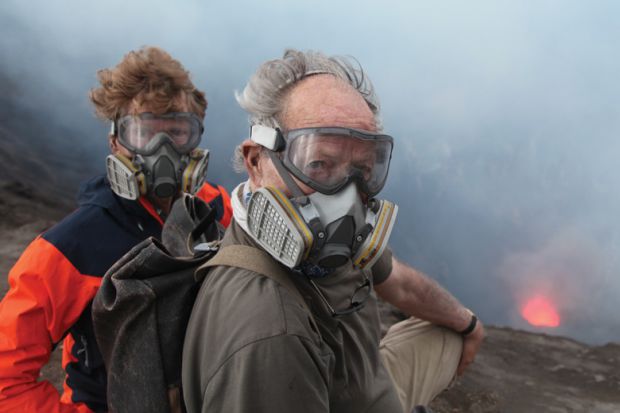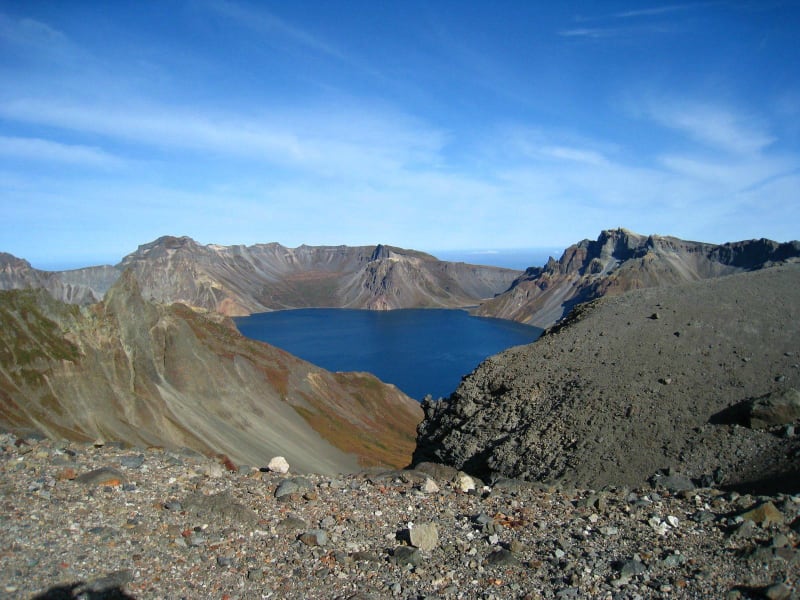Another Underrated List is yet another list of so called “underrated” films from yet another white guy who writes about films on the internet. This issue I’m spotlighting one of Werner Herzog’s lesser known documentaries, Into the Inferno, which is a fascinating look at our relationship with Volcanos.
In 2016, Werner Herzog released 3 films: 2 documentaries and 1 feature. Yet, only one of these films, Lo and Behold, Revelries of the Connected World, had any fanfare behind its release.
A biography of the Internet that also meditates on the evils resulting from its creation, Lo and Behold is an odd-fit for Herzog as his age and seemingly unfamiliarity with Internet culture was brought to the forefront over and over again during a simultaneously too long and too short 98-minute run-time.
In the case of Salt and Fire, Herzog’s 2016 drama about a kidnapped, environmental activist, this lack of attention is justified. Save for a completely insane performance by Michael Shannon and memorable lines such as, “The noblest place for a man to die is the place he dies the deadest” and “I only use a wheelchair when I’m tired of life,” Salt and Fire is only worth watching as a curiosity.”
Yet, in spite of these misfires, Herzog’s 3rd release of 2016, Into the Inferno, proves that he hasn’t lost any of his potency and knack for probing into humanity’s complex relationship with nature.
Ostensibly, Into the Inferno is a film about volcanoes. A spiritual sequel to Encounters at the End of the World, the focus of Into the Inferno isn’t as much on the natural enormities as it is on the people that experience and interpret them. “Obviously, there were a scientific side to our journey,” Herzog declares, “but what we were really chasing was the magical side.”
Co-leading this globe-trotting journey is Dr. Clive Oppenheimer, a volcanologist from the University of Cambridge, whom Herzog meet while filming Encounters at the End of the World on Mt. Erebus in Antartica. At the summit of this volcano, Oppenheimer turned his own camera on Herzog, picking his brain on how he interprets volcanoes. As Herzog tells Oppenheimer that he doesn’t see volcanoes only in destructive terms, that “It’s good that they’re there and that the soil we are walking on is not permanent,” you can feel a friendship being formed.
This friendship, as opposed to Herzog’s notoriously difficult working relationship with Klaus Kinski (See My Best Fiend), is seemingly a match made in heaven. Oppenheimer’s passion for his area of study combined with Herzog’s gift for capturing the many oddities of human existence and signature narration, makes for a compelling exploration of volcanoes around the world and the lives of those who are shaped by them.
From Chief Mael Moses’ tribe on the island of Endu, to Dr. Yonatan Sahle and Professor Tim White’s archeological expeditions in Ethiopia, to the Codex of Iceland, Herzog and Oppenheimer illuminate the touch that molten fire has had during the entirety of human existence, spiritually and scientifically. In Indonesia, the country with most active volcanoes on the planet, we get to see a ritual to appease the volcano’s half-human, half-god dweller as well as the Babadon Observatory, a scientific, monitoring station on the same volcano. Both are important to the story, woven together into the overall story of human existence by Herzog and Oppenheimer.
Yet, the most enamoring view of human existence that Into the Inferno offers, is its view into North Korea. Thanks to a joint scientific expedition between the U.K. and The Peoples Republic of Korea, Herzog and Oppenheimer were allowed to film on Mt. Paektu, as well as monuments and some aspects of North Korean life, such as a subway station entirely free of advertising and people on cellphones. While Herzog acknowledges that the only way to see North Korea is the way it wants to be seen, he goes with it, and gets every bit of footage he can get of the notoriously secretive country.
Here again, we find humans linked to a volcano, as Kim Il-Sung used Mount Paektu, the symbolic birthplace of the Korean people, to further his vision of North Korea. Remarking upon the scores of North Koreans who make pilgrimages to Mount Paektu, Herzog sees another religious experience formed from the fires of the earth. Though, I wish this section of Into the Inferno could have been an entire film in itself, it is transfixing and I’m thankful that Herzog and Oppenheimer even got the chance to go there, let alone to film.
(Also this section is scored by the propaganda song We Will Go To Mount Paektu, and the fact that it was made to promote a brutally oppressive regime aside, my word is it a banger!)
Oh, and did I mention that there is a chicken church? And Kampiro Kayrento, the world’s greatest fossil hunter/fossil finding dancer? So what are you waiting for? Go experience volcanoes through Herzog and Oppenheimer’s gaze; As soon as you hear Herzog’s narration over images of flowing lava, you’ll be glad you did.
Into the Inferno is currently streaming on Netflix. Also, last year Dr. Clive Oppenheimer published the book Mountains of Fire: The Menace, Magic, and Meaning of Volcanoes. I just read it and it serves as a fantastic companion piece to this film.
Originally published in January of 2019


